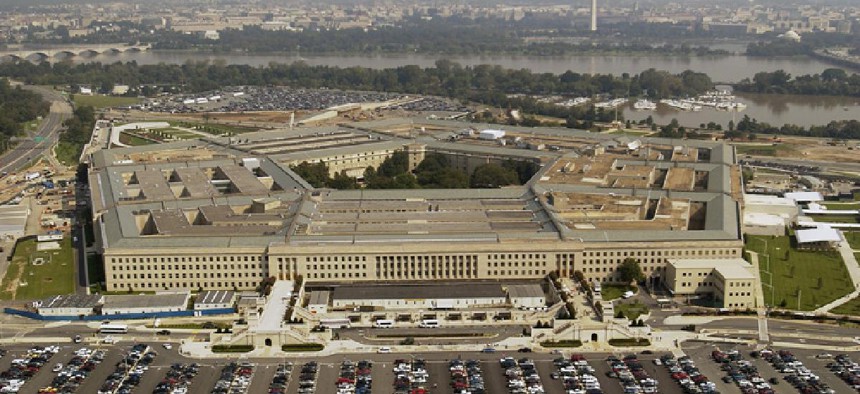One Solution to Sequestration: Slash Tens of Thousands of Defense Jobs
Money could then be shifted to emerging priorities like cybersecurity, space and the pivot to Asia, think tanks find.
The Defense Department could manage long-term budget cuts from sequestration by massively reducing its civilian workforce, according to teams of analysts from Washington-based think tanks.
The teams came up with their solutions to the across-the-board spending cuts during a shadow budget review organized by the Center for Strategic and Budgetary Assessments and held on Capitol Hill Wednesday afternoon. CSBA’s simulation directed the analysts to choose specific programs to maintain or cut based on full sequestration -- a $522 billion budget reduction through fiscal 2023 -- and about half that figure ($247 billion) in the same timeframe.
The four participating organizations -- the American Enterprise Institute; the Center for a New American Security; the Center for Strategic and International Studies; and CSBA -- all said that Defense could reduce its workforce by tens of thousands through the next decade under both budget scenarios while continuing to focus its resources on key priorities like cyber warfare and the pivot to Asia.
The simulated cuts to the workforce ranged from a reduction of 82,000 civilians -- as AEI’s team proposed -- to 263,000, as argued by CNAS’ team. The teams assumed constant increases in civilian and military pay at the rates proposed in Defense’s fiscal 2014 budget request.
Possible cuts would need to go along with rounds of the Base Closure and Realignment Commission process to shutter some unnecessary facilities and direct resources to more strategic areas, the analysts found. However, this is unlikely to be politically palatable; the Obama administration’s proposal for another round of BRAC is falling on deaf ears in Congress.
The teams also directed their simulated budget axe at some branches of the military. Under a full sequestration scenario, all four teams reduced Army Active Component end strength by more than 70,000 troops, with CSIS proposing a 163,000 troop cut. The teams shifted the money they saved to create additional capabilities in the Navy and Air Force.
The simulation comes as Defense on Thursday delayed the rollout of its Strategic Choices and Management Review for several weeks, according to the American Forces Press Service . In March, Defense Secretary Chuck Hagel ordered Deputy Defense Secretary Ashton Carter and Chairman of the Joint Chiefs of Staff Gen. Martin Dempsey to undertake the review, which will guide the Pentagon’s fiscal 2015 budget request and affect some resource decisions for fiscal 2014. Defense Comptroller Robert Hale has said that longer-term sequestration could mean job losses at Defense.
Below are a few graphs from CSBA comparing the way the analyst teams allocated their cuts and priorities.








